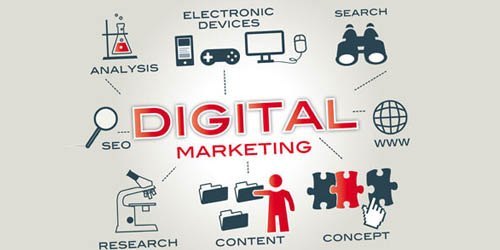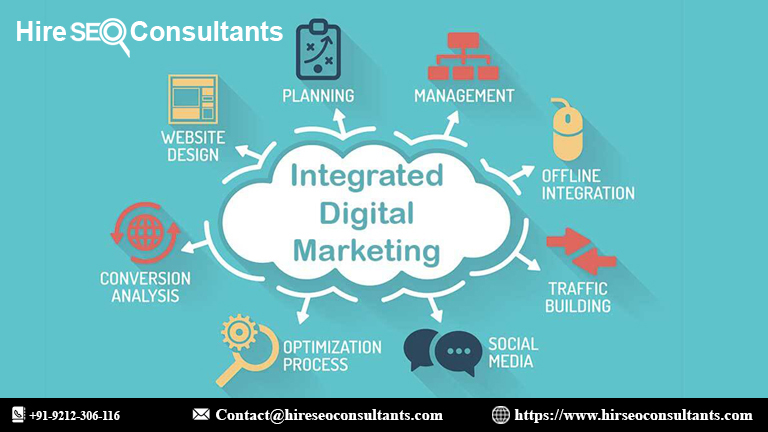The Ultimate Guide to Logistics Software Development: Benefits, Features, and Cost Insights
Discover how logistics software development can streamline operations, reduce costs, and enhance efficiency. Learn about key features, technologies, and cost factors in this comprehensive guide.

The logistics industry is just like any other: constantly evolving technology presents new chances for businesses. Research firm Gartner found that 87 percent of supply chain experts want to put money into making their platforms more robust. Logistics is a vast and intricate field that calls for pinpoint accuracy, ongoing process optimization, and a plethora of simultaneous operations. Businesses can automate and simplify their operations with the use of software product development technology, leading to greater productivity.
What is Logistics Software Development?
Transportation businesses may streamline freight operations, cut expenses, save time, and improve customer service through logistics software development, which involves designing digital solutions to automate and manage transportation and warehouse chores. A vast array of tools are encompassed by logistics applications, including but not limited to order processing, inventory control, vehicle tracking, and fleet management. Improved process visibility, more efficient supply chain management, and lower operating and transportation expenses are some of the benefits that businesses reap from these solutions.
There is a wide variety of logistics solutions available, including applications for developing software for supply chains, systems for managing warehouses and enterprise resource planning, tracking tools, and systems for managing transportation. If you want logistics software development services, you can get in touch with transportation and logistics software development agency.
What is a Transportation Management System?
Logistics platforms that use technology to aid in the planning, execution, and improvement of physical commodities movement are known as transportation management systems (TMS). In addition to efficiently managing incoming and outbound goods, it also checks for compliance and makes sure the right paperwork is available. These systems handle the incoming raw materials, move them across the company, and finally distribute the finished goods to the clients. Organizations may offer their customers the finest service possible with the use of a TMS, which is designed to optimize shipping, maintain records, and guarantee compliance.
A wide variety of industries rely on TMS, including retail, manufacturing, pharmaceutical, healthcare, food and beverage, logistics, government, and defense.
The Benefits of Developing Logistics Software
It is not an easy task to manage logistics, which includes supply chains, equipment, deliveries, and more. Let's take a look at how logistics software can help your company become more productive and profitable.
Process Automation
Errors caused by human mistake are common when activities are executed manually. The human brain is more prone to oversight and exhaustion-related blunders than a computer's. Machines are great at doing mundane, repetitive tasks, but people are great at solving complex problems and thinking analytically. By replacing human intervention with automated systems, you may free up your employees to take on more fascinating and difficult work.
Cost Reduction
You can save money by taking advantage of growth prospects that are highlighted by logistics software tools. Major savings will be possible in the long term thanks to these systems' ability to find the optimal routes, conduct cost analyses to choose the best supplier, and eliminate human mistakes.
Data Collection
Companies can keep their data collecting methods organized with the use of logistics software development services. This accomplishes double duty: it eliminates the need for human intervention during data entry and makes it possible to methodically compile information from various sources. By doing so, you can remove any inconsistencies or duplicates and better analyze the data for future decision-making.
Better Customer Experience
The logistics and transportation sector has seen a marked improvement in customer satisfaction because to the proliferation of tracking systems. Your clients can track the delivery status on the app instead of depending on random time periods. A more trustworthy relationship with clients is fostered by this feature's increased transparency.
Resource Optimization
Another way logistics software helps businesses save time and money is by letting them reallocate resources. For instance, by keeping tabs on your vehicles, you may figure out exactly how many drivers and trucks are needed to complete a given delivery. Software like this might help you optimize your warehouse space by rearranging your products for maximum efficiency.
Increased Visibility and Efficiency
Companies may ensure safe and transparent transactions across the supply chain by utilizing logistics tools' intelligence. Building secure workflows is one way to take advantage of dependable infrastructure, which in turn boosts visibility and productivity across the board.
Improved Reputation
One way to stay ahead of the competition is to have a secure application that has an interactive user experience, easy navigation, and all the key functionality. When users experience your platform's high level of quality and performance, they are more likely to trust you. A solution like this will not only help your company and its reputation, but it will also have a great effect on your staff.
Critical Elements of Logistics Management Software
To ensure that any logistics solution lives up to user expectations, we will concentrate on the most crucial aspects in this area.
GPS Tracking
With the use of real-time tracking features, businesses can keep tabs on every shipment, from the moment it leaves the warehouse until it reaches its final destination. For optimizing routes, maintaining vehicles, and ensuring customer happiness, this data is priceless. If you can keep tabs on your shipment in real time, you can quickly adjust your route to stay on schedule and avoid any surprises.
Order Management
Software for logistics and transportation also includes features to help you keep track of your orders. A more streamlined and ordered process structure is made possible by using a complete system to create, edit, and handle each order.
Documentation
The accountability and openness of logistics operations can only be guaranteed with the accompanying documentation of each transaction. By facilitating the creation and secure storage of reports and invoices, logistics software is designed to streamline record-taking. Quickly find the correct document by making use of the filtering features. By centralizing all of your software development technical paperwork, such as contracts, agreements, and shipment information, you may better organize your processes and obtain useful insights.
Forecasting
Custom logistics software that can foresee consumer wants and market shifts is possible with the help of machine learning algorithms. Thoroughly and reliably gather data in order to conduct analytics and get valuable insights on consumer behavior. You can predict their future behavior in relation to your service based on the results.
Inventory and Logistics Management
Businesses may keep tabs on supply levels and maximize stocking and replenishing with the help of inventory control software. You may monitor the amount of items you have on hand, the amount you'll need in a given time frame, and how these quantities can fluctuate in response to demand with this function. To keep track of stock and identify damaged or lost shipments, logistics firms use technologies like barcodes and QR codes.
Real-time Supply Chain Visibility
To boost company productivity, real-time data collecting is essential. Possible problems can be confronted directly if information is gathered and processed as it becomes available. Customers will be able to make last-minute changes, seek status updates at any moment, and be informed about the status of their orders using this feature.
Also, having access to data in real-time makes companies more adaptable to change and gives them visibility all the way down the supply chain. Thanks to this openness, we can build a system that is both structured and traceable, and it will work flawlessly.
Warehouse Management
Warehouse management is an exacting science with its own set of rules and regulations. In a huge warehouse, the consequences of a mistake might range from an angry customer to a severely hurt worker. Make sure your warehouse management systems are strong and focused on safety so you can keep track of goods, maximize storage space, and add capacity.
Delivery Cost Calculation
Logistics software also allows you to calculate delivery fees that are high enough to pay your expenditures but not so costly that clients are scared away. You can find the precise ratio to keep your firm healthy while maintaining competitive fees with the help of these programs' thorough expense analyses.
Offline Mode
When your systems are down or your internet connection isn't working, it can be really helpful to switch to a lightweight offline version of the software. Reports, order history, and other pertinent data can be retrieved by users in this mode.
Messaging and Calling
Think of integrating calling or message capabilities to contact drivers while they are on the road. A logistics management can discover a better technique to tell the driver in real time if they discover an accident that will cause the delivery to be delayed.
Notifications
The incorporation of a notification system to apprise users of updates is an essential component of any contemporary program, including logistics software development. Notifications let them know about system improvements, new offers and discounts, the whereabouts of their shipment, and any other relevant information.
Technologies Used in Logistics Software Development
Using the Internet of Things (IoT), artificial intelligence (AI), the cloud, and other cutting-edge technologies, logistics procedures can be improved, adding to the efficiency and cost savings enjoyed by businesses across all industries.
Internet of Things
When it comes to developing software for supply chains and logistics, the Internet of Things (IoT) is leading the way in digitization. Your equipment, inventory, and orders may be tracked in real-time with the help of sensors. Improving storage conditions and enabling predictive maintenance are just two examples of the many amazing advantages made possible by IoT technology, which is especially true when combined with 5G.
Artificial Intelligence and Machine Learning
Two of the most prominent technologies for automating processes and making predictions are ML and AI. Businesses can free up staff to concentrate on higher-level, more interesting work by automating routine, repetitive processes. Meanwhile, ML algorithms are able to accurately forecast market trends and consumer behavior by utilizing large data.
Computer Vision
Computer vision is a technology that can analyze visual data and translate it into binary, making it another trailblazer in process improvement. Scanning packages, including damage detection, becomes much easier and quicker using this approach. The logistics business might benefit greatly from computer vision's many possible uses, such as improving infrastructure security and simplifying warehouse management.
Robotic Process Automation
The logistics and supply chain management industries have also discovered robotic applications. Guided cars and autonomous robots can help warehouse workers save time by reducing the amount of time spent sorting and retrieving items. By eliminating potentially dangerous human error, this technology not only improves productivity but also makes workplaces safer.
Last-mile Delivery Technologies
The last leg of a delivery's journey can now be monitored thanks to last-mile delivery technologies. By utilizing autonomous vehicles, drones, robots, and real-time location sharing, businesses are able to provide clients a more open and honest experience. Apps like Postmates and Uber Eats already make use of this technology by providing customers with up-to-the-minute information about the progress of their orders.
Standard Operating Procedures for Logistics Software
Think about how the application will scale before you begin developing transportation logistics software. Scalability, a crucial aspect of logistics, necessitates an adaptable and modular design utilizing microservices or containerization. More flexibility and the ability to make changes as you go are two more benefits of the Agile process.
A user-centric design that entices clients with responsive interfaces and easy navigation is another critical component. To do this, it is essential to conduct ongoing user testing in order to determine which design is most appreciated by your target audience.
Your application's success is also heavily dependent on its security. By implementing best practices such as strong permission management, frequent audits, and multi-factor authentication, logistics organizations may guarantee the highest level of data safety.
Last but not least, guarantee that you have created a setting conducive to teamwork that encourages candor and understanding among team members. Develop logistics software that stands out by including every stakeholder, from company executives to the software development partner and users.
Logistics Software Development Cost
Outsourced product development can cost anywhere from $20,000 for a minimum viable product (MVP) to $100,000 or more, depending on a variety of circumstances. A lot of factors, such as the deployment type, feature count and complexity, technology stack, IT partner's location, and more, affect the final price tag. Eastern European engineers with the same level of expertise can be hired for $30 to $50 an hour, compared to developers in the West who demand $100+.
Conclusion
Custom logistics software development offers businesses a transformative opportunity to streamline operations, enhance efficiency, and reduce costs. From automating repetitive tasks to providing real-time supply chain visibility, such solutions are essential for staying competitive in a rapidly evolving industry. While the initial investment may vary—ranging from $20,000 for an MVP to over $100,000 for a comprehensive system—the long-term benefits in operational efficiency, cost savings, and customer satisfaction far outweigh the costs. By leveraging modern technologies like IoT, AI, and robotic process automation, companies can build robust, scalable, and secure platforms tailored to their unique logistics needs, ultimately fostering growth and success in an increasingly complex marketplace.
What's Your Reaction?


















